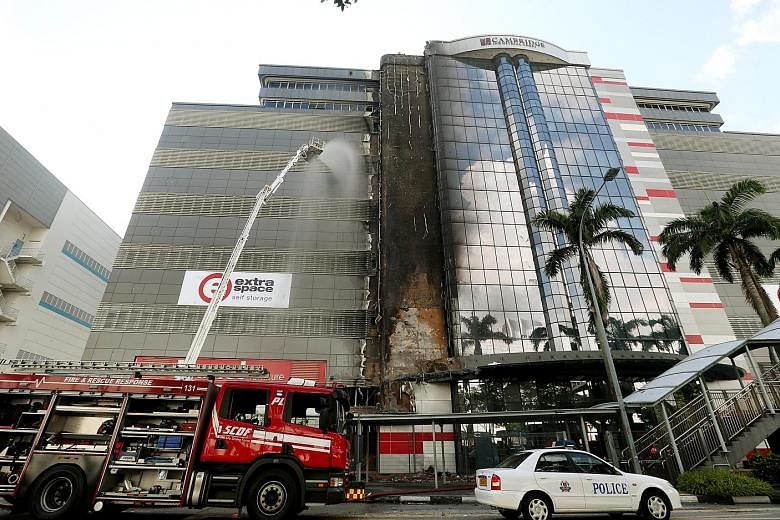Cladding and fire safety
In June, thousands watched as the 24-storey Grenfell Tower in London burned - overwhelming emergency responders and killing 71 of its occupants.
Few watching in Singapore knew, however, that the disaster would later cast a spotlight on investigations into an incident that took place here a month earlier.
A preliminary investigation in London pointed to the external combustible cladding having accelerated the spread of the blaze. Public anger and tests on thousands of British buildings led the authorities to uncover more than 250 buildings that failed to meet the mark.
In Singapore, building experts began to murmur about whether there was a need to look at the use of combustible aluminium composite panels (ACP) here. According to building plans submitted since 1985, fewer than 20 per cent of the buildings in Singapore used such cladding material.
By then, investigations into a fire that engulfed an industrial building at 30, Toh Guan Road in Jurong in May were under way. The fire reportedly spread across multiple floors via the building's external cladding, killing a 54-year-old woman.
The Singapore Civil Defence Force (SCDF) and the police revealed in late August that they had been carrying out an extensive investigation into the case, as well as other buildings that used the same brand of cladding, Alubond.
Preliminary findings show that the brand's sole distributor, Chip Soon Aluminium, had mixed up two stocks of ACPs with different fire performance ratings at its warehouse. Chip Soon has disputed this as it claims to possess the right certification for the product.
In the list of buildings identified by the SCDF as affected by the combustible cladding, its own Clementi Fire Station was one of those which failed the test.
SCDF initially identified a total of 41 buildings and projects believed to be using Alubond brand panels, subjecting them to tests. If they fail, they have 60 days to remove all the cladding material.
But this month, the number grew when the SCDF flagged two new brands of ACPs - Bolliya and Bolli-Core FR - which had failed further fire performance tests.
A police probe into the Toh Guan fire is ongoing, with a coroner's inquiry on the cause of death to come soon. "Action will be taken if there is evidence of criminal culpability," said SCDF. As owners of buildings that failed SCDF's checks rush to remove the panels, the authorities are reviewing the use and certification of these panels here.


